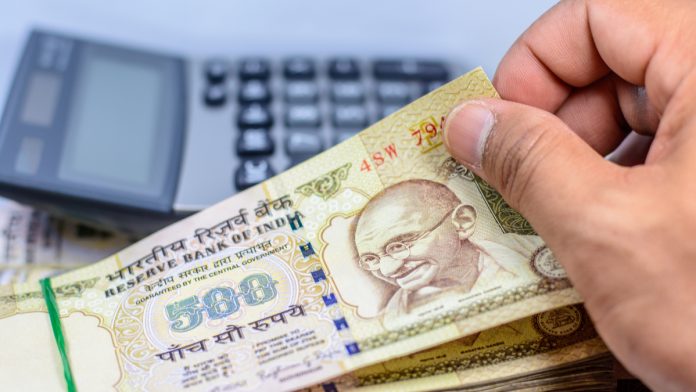GBP/INR is moving sideways in early trading on Friday. The pair is set to end the week slightly lower. Currently, one British pound buys 97.523 Indian rupees, down 0.01% as of 7:05 AM UTC. The price found support near 97.300 and tried to bounce back. However, it couldn’t break above 97.800, so it has been ranging for a while.
This week has been short on fundamentals, so the pair has moved based on investors’ sentiment driven by the price action alone. Earlier this month, the price hit the highest level in over four years at over 99.300, but the pound has lost ground since then and corrected.
Indian Economy Will Start Recovering Only Next Year
Still, the rupee is under more pressure as the Indian economy cannot squeeze the same recovery pace as the UK. A recent poll by Reuters showed that India’s deepest recession in history would extend until the end of the year. This is because the rapid increase in coronavirus cases doesn’t allow Asia’s third-largest economy to revive.
The virus is spreading faster in India than in most of the countries. Over 3 million people have been tested positively for COVID-19, and over 60,000 have died. Millions of people have lost their jobs due to the pandemic and the lockdown measures that came with it.
The coronavirus is spreading faster in India than anywhere else in the world, with more than 3.3 million people already infected and related deaths at over 60,000. COVID-19 has kept tens of millions of people shut indoors and made many millions jobless in the world’s second most populous country.
Prakash Sakpal, senior Asia economist at ING, was cited by Reuters as saying:
“Although this might be the low point in the ongoing crisis, the rapid increase in infections this quarter provides no hope of a near-term recovery. The macro policy has hit a snag amid stretched public finances and rising inflation. This means pretty much nothing can save the economy from continued deep declines for the rest of the year.”
The economy is about to contract 8.1% in the current quarter and 1% in the next, according to the survey. At the end of July, respondents predicted 6.0% and 0.3% contraction, respectively.





